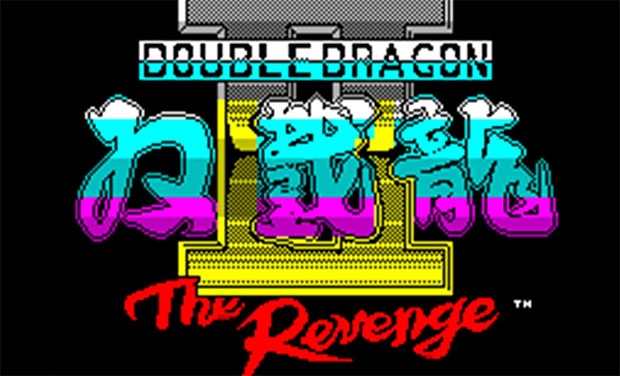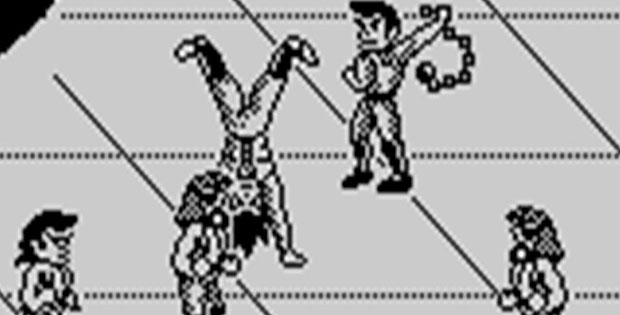Raised By Screens, Chapter 3 - Double Dragon II
Revenge of the Spectrum
Raised By Screens is probably the closest I’ll ever get to a memoir – glancing back at the games I played as a child in the order in which I remember playing them, and focusing on how I remember them rather than what they truly were. There will be errors and there will be interpretations that are simply wrong, because that’s how memory works.
Until the earliest years of secondary school, I didn't experience any degree of what would now be termed 'brand loyalty' or, less charitably, 'fanboyism', aside from an extremely strongly-held (and entirely correct) conviction that Transformers were infinitely superior to Go-Bots. Computers and consoles (of which I'd had only minimal experience) were outright magic no matter whose badge they wore: they made the images on my screen come alive in my hands. They took me to other places. Some looked more colourful or more detailed than others, sure, but the simple concept and wonder meant a games machine was a games machine, and therefore more important than anything else in the house.
The shift happened around age 12, as richer kids got their first Nintendos and Segas, and an elite few their first Amigas. With access only to a rapidly-ageing BBC Micro, I was simply an oddity to be gently mocked or pitied, an outcast by technological default. To the point that I've sometimes wondered if my life - and self-confidence - might have taken an entirely different course had I found a NES under the tree one year.
What happened instead is that I inveigled my way into a slightly more populous minority group, so while we might have remained somewhat ridiculous in the eyes of our Mario-toting peers, at least we had company. It was a group I probably should have been in to start with, but my family's own ZX Spectrum 48K had long since developed all manner of exciting faults and been consigned to the loft. Still, I decided to go backwards as I couldn't go forwards, and was able to join the school's tiny, unofficial Speccy Club by proxy - I had experience, and my best friend often let me play on his 128K model.
We played, years later than their original release, a series of crazy but ambitious games - Trapdoor, How To Be A Complete Bastard, Manic Miner of course - and we loved them. But we did feel left behind by where games seemed to be going for everyone else, for people whose parents didn't believe that a console inevitably meant moral corruption. That made us defensive. That made us construct paper-thin arguments that our machine and its catalogue of oddities was in fact the technological and artistic superior of these colourful, boxy upstarts. These plebs and their Marios and Sonics, honestly. Brand loyalty and blind fanboyism, brought out for the first time because we didn't want to feel that we'd somehow made the wrong choice (not that we'd really had a choice). All of this has happened before, and all of this will happen again.
Our conviction that we were superior was cemented on the day that something impossible came home.
DOUBLE DRAGON II: THE REVENGE
1989, ZX SPECTRUM 48K/128K
DEVELOPED BY BINARY DESGINED LTD, PUBLISHED BY VIRGIN MASTERTRONIC LTD
Martial arts-themed side-scrolling beat' em up, based on the arcade coin op of the same name, with a heavy emphasis on two-player co-op. The Spectrum adaptation was primarily monochromatic.
I can't remember if we had any idea that the first Double Dragon had previously been released on Spectrum - we couldn't afford games magazines so had little to no idea what was current and what was old. I believe we found Double Dragon II in a bargain bin several years after its release, possibly on a compilation tape, but what I remember for certain is our excitement. We'd played assorted Double Dragons in local arcades, and in the musty little games shop which let kids have a fifteen minute play on a Nintendo game of their choice for 50p, so we knew what it was, we knew punching pretend people was brilliant and we'd never even dreamt that we'd get to do it from the comfort of our own homes.
It was, of course, a pale shadow of its fast and lurid coin-op incarnation. Almost no colour, a fraction of the speed, awkward controls, but by God it was as thrilling a game as I've ever played. The Spectrum was for obtuse puzzle games and fiddly platformers - to see it host a street brawl was to see it transformed. To see it support both of us engaging in that street brawl at once was miraculous confirmation that, yes, this was the best gaming machine in existence. SPECCY 4 EVA. This was as good as life got.
"Jesus Christ!" I exclaimed, as once again my punches and kicks failed to connect, and my burly, black and white avatar once again blinked out of existence. I'm fairly confident this was the first time I'd ever blasphemed in anger. I'm fairly confident it was the first time I'd ever been made angry by a videogame, too.
A shocked pause from my friend.
A sharp rush of air into the room.
Hot, dry breath in my ear: "Jesus is alive and well and watching over you right at this moment. Do not take his name in vain."
His devoutly Christian mother scowled at me, her whole body shaking in rage, clearly battling the urge to say - or do - worse. Then she picked up the plate full of toast crusts we'd left next to the TV, turned on her heel and left the room. I played on in total silence for another ten minutes, then asked to go home. I never played Double Dragon II again.



